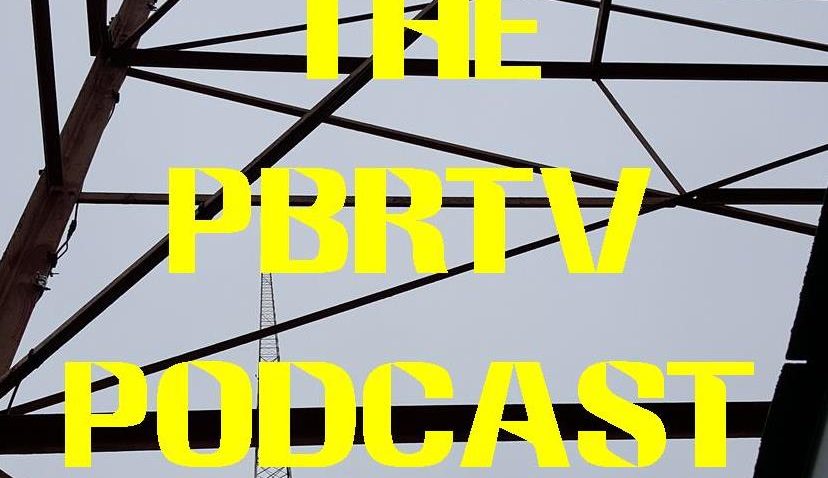The way it was, and what we’ve lost
July 20, 2009. . .
First, there are no “crawls” along the bottom of the screen, or spinning logos, or loud musical transitions.
Graphics are generally confined to a few slides or maps. Fancy 3-D animation wasn’t necessary to tell a good story.
Second, either there’s no TelePrompTer, or Cronkite isn’t using it — instead, he’s reading from the printed script on his desk.
That would drive nine out of 10 local TV news directors nuts: “Make eye contact, Walter! Oh, and have you thought about a facelift?”
. . .
Third, and most important, CBS devoted 15 minutes to this story (part two is also online), covering almost every angle as thoroughly as possible.
At the end of this broadcast, viewers knew as much as they needed to make informed decisions.
Yet it’s hard to imagine any story today that would capture more than half of a 22-minute network evening newscast. In 2009, a story like this would be chopped to three or four minutes, tops.
. . .
So, did our attention spans get shorter and force TV news to speed up its pace? Or did faster TV newscasts shorten our attention spans?
In any case, this style of sober, responsible, patient and explanatory TV journalism is almost completely gone from broadcasting, with the possible exception of PBS’s “Frontline,” and that isn’t a seven-day-per-week nightly newscast.
On radio, perhaps NPR’s “All Things Considered” comes close to delivering something along the same lines as the “CBS Evening News” in the 1970s. (You folks who regard both CBS and NPR as hopelessly “liberal” can now write your own punchlines.)
. . .
Unfortunately, Walter Cronkite’s “CBS Evening News” comes from a time when broadcasters took seriously their responsibility to serve the “public interest, convenience and necessity,” and when news wasn’t viewed as a profit-center, but as an obligation.
It also comes from the time before deregulation and consolidation, and as a result, couldn’t air on any commercial TV network today.
Viewers conditioned to TV news delivering a full-frontal audio and visual assault would tune out in droves. Sponsors would howl. Shareholders would revolt.
Today, instead of getting a good, solid explanation of important issues, we get Chris Hansen snaring perverts on “Dateline: NBC,” Glenn Beck’s psychotic hissy fits on Fox, Keith Olbermann’s self-righteous “How Dare You, Sir?!” lectures on MSNBC, and two hours of happy-talk B.S. fluff (“Does it Really Do That?”) on our local affiliates.
. . .
And it’s unlikely we’ll ever see TV news ever getting this serious again.
When KDKA-TV’s sister station in Chicago, WBBM-TV, tried to deliver a stolid, “no fluff” evening newscast in 2000, it went down in flames and was canceled within nine months.
The Christian Science Monitor opined that viewers wanted “junk food news.” One disheartened fan of the Chicago experiment wrote a letter to the New York Times decrying the continuous “dumbing down” of broadcast journalism. His name was Walter Cronkite.
. . .
In the Cronkite obituaries, many people remembered his 1968 commentary that concluded American military and political leaders were lying about the supposed successes of the Vietnam War.
Few of those people explained why Cronkite’s words resonated with Americans — because the newscasts he anchored had a reputation for credibility. They earned that reputation through solid, no-B.S. reporting, such as the kind on view during the Three Mile Island coverage.
. . .
Some argue that the solution is going back to the pre-deregulation days, and forcing TV and radio stations to carry a certain amount of news and public-service programming during peak hours.
I’m not talking about the Fairness Doctrine, a strawman much abused these days by certain political commentators.
I’m talking about requiring people who hold broadcast licenses or cable TV franchises — which are privileges allowing private industry to use the public’s property — to devote a certain percentage of their facilities to presenting accurate, serious news.
But would that work? Or would we viewers, whose bodies have been conditioned to “junk food news,” find that we can no longer digest meat and potatoes, and tune out?
. . .
It might be worth the risk to our delicate sensibilities. Leaving the decisions strictly to the “invisible hand” of the free market has left the average TV viewer with plenty of gory details about Michael Jackson’s medical problems, and little reliable information about, for instance, the U.S. health care system.
Yes, you can find “discussion” of important issues on cable TV. It consists of two talking heads — one from the right, one from the left — yelling at each other for 22 minutes.
It’s a lot of heat, but not much light. It’s no substitute for someone like Walter Cronkite spending the time to explain the different facets of an issue.
A serious nation with serious problems deserves serious news, like that once delivered by Walter Cronkite, David Brinkley, John Chancellor and others. Until we start getting some serious news again, our citizens are less informed and our democracy is poorer.
That’s why we miss you, Walter Cronkite, in more ways than one. And that’s the way it is.
. . .
Another telling Cronkite clip … live, on the air, he delivers the breaking news that former President Lyndon Johnson has died. When the news was at its worst, Cronkite often was at his best:
(Commentary/Editorial)
In honor of Walter Cronkite, who died Friday at 92, here are several minutes of the “CBS Evening News” from 30 years ago in March, with coverage of an event that many PBRTV readers of my generation will remember well: The accident at MetEd’s Three Mile Island nuclear power plant near Harrisburg.
Watch this clip and you’ll remember why Walter Cronkite was the “most trusted man in America,” and why most of what currently passes for broadcast journalism isn’t.
I’m not sure why this clip is in black-and-white (the “CBS Evening News” went to color back in the ’60s), but several aspects of the coverage present a striking contrast with modern TV news.

